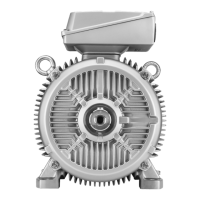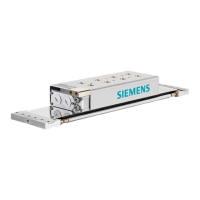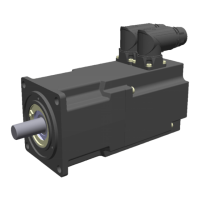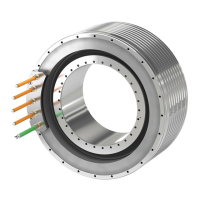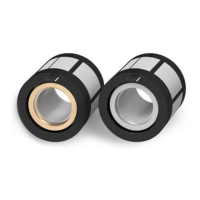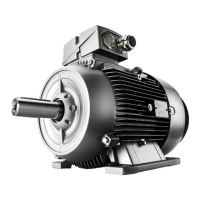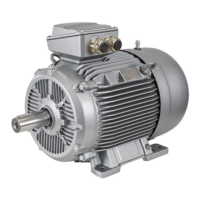6.3 Terminal designations
According to IEC / EN 60034-8, the following basic definitions apply to the terminal
designations on DC motors:
Table 6-1 Terminal designations in example B1
B 1 Designation
x Code letter for winding parts (A, B, C, D, E, F)
x Identification number showing winding start (1), end (2), or tapping if there is more than
one connection per winding
The terminal diagram pasted into the terminal box shows only the conditions required for
connection to the line power supply, without detailed representation of inner connections or
winding components.
6.4 Connecting cables
The power cables are connected in the terminal box. Supplementary connections for auxiliary
circuits with terminal strips for cable cross-sections of up to 2.5 mm
2
are provided. Terminal
post insulators or Terminal Boards (depending on construction type) are provided for
connecting the excitation circuit.
● Terminal boxes can also be rotated by 90° in each case depending on the connecting
direction. Please ensure that winding feeder cables are relaid correctly. In this case, the
insulator plate does not need to be repositioned. Under difficult conditions, e.g. with large
cross sections or a large number of cables, repositioning a terminal box may only be
possible with restrictions or special adaptation steps may be necessary.
● Connect the cables in such a way as to ensure a permanent and reliable electrical
connection. Depending on their design, the connecting parts may be suitable for connection
with or without cable lugs. Use the matching cable end pieces.
● Make sure the protective conductor connection is secure.
● Comply with the rating plate data and the terminal diagram in the terminal box when making
the electrical connections.
Electrical connection
6.4 Connecting cables
SIMOTICS DC 1GG5
52 Operating Instructions 02/2016
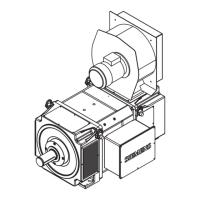
